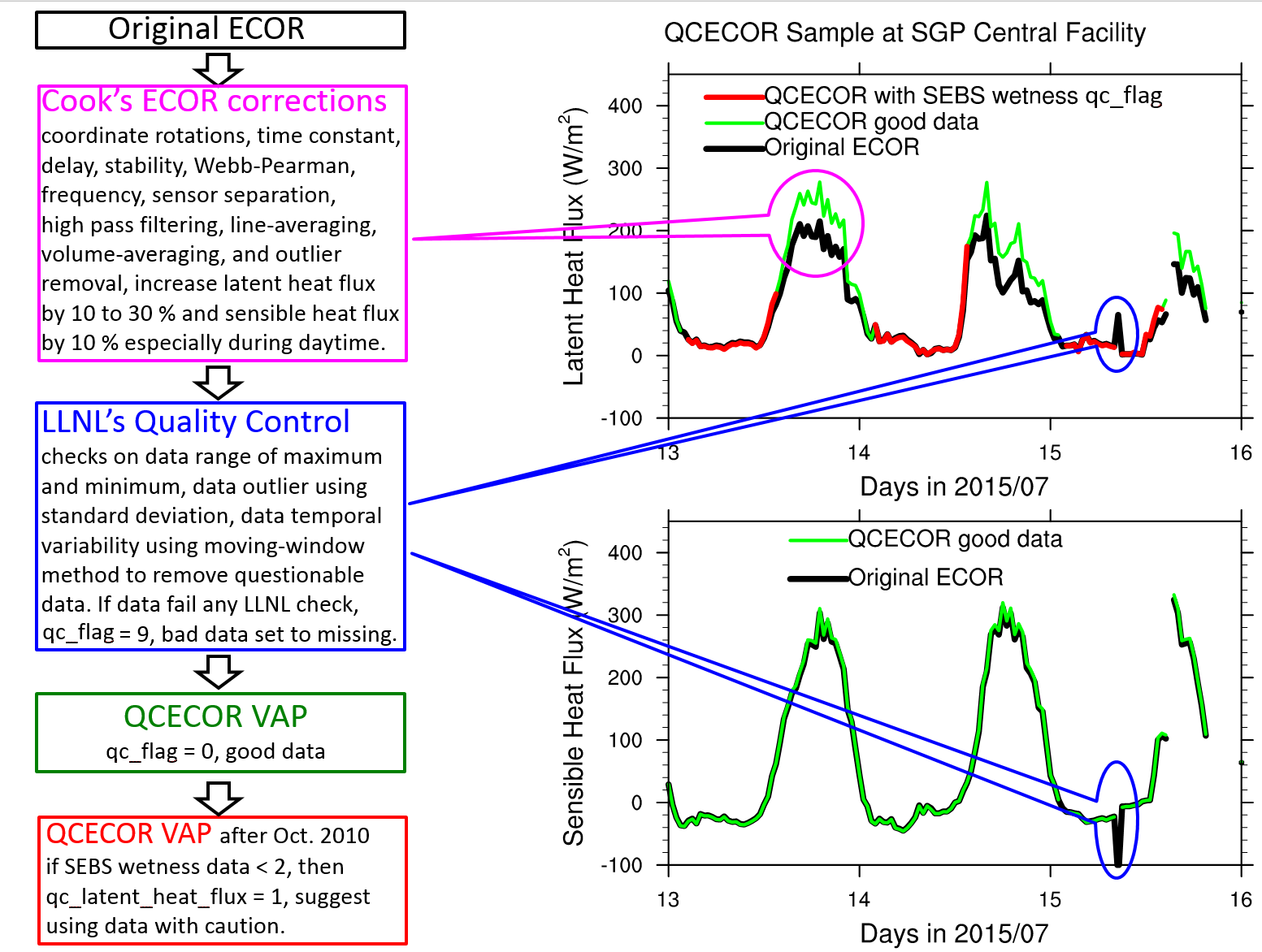
Two more years of data have been processed for the Quality Controlled Eddy Correlation (QCECOR) value-added product (VAP). This VAP provides improved surface turbulence flux measurements to the ARM user community. Data now extend from 2003 to October 2017 for all systems at the Southern Great Plains (SGP) atmospheric observatory.
ARM deployed eddy correlation flux measurement (ECOR) systems at all fixed and mobile observatories. Original ECOR data were not corrected through common eddy correlation corrections and contained questionable data due to instrument and measurement uncertainties. These uncertainties in the ECOR surface turbulence fluxes hindered data usage by the user community. To improve the ECOR data, the QCECOR VAP was developed.
The QCECOR VAP improves ECOR data by applying the following quality control (QC) procedures:
- Eddy correlation corrections – Include stability, Webb-Pearman, frequency, sensor separation, filtering, line averaging, volume averaging (Cook et al. 2008; Fuehrer and Friehe 2002).
- Energy balance correction – Based on measurements from the surface energy balance system (SEBS), wetness measurements from SEBS are used to flag incorrect fluxes as a result of precipitation, dew, or frost after October 2010.
- Quality control checks – Include 1) data range check on maximum and minimum values, 2) outlier check using standard deviation, and 3) temporal variability check using moving window method.
Based on the initial analysis, these corrections generally increase the latent heat flux by 10 to 30 percent and the sensible heat flux by 10 percent from the original data, especially during the daytime, while a much smaller increase is noticed during nighttime. The new QC checks effectively reject questionable data points due to instrument or measurement uncertainties.
Current efforts focus on the release of the QCECOR VAP to production for automatic updating. This will make QCECOR data available more quickly in the future.
Users can access the data set from the ARM Data Center. (Go here to create an account to download the data.) To share your experience using the data or to ask questions, contact Shuaiqi Tang or Shaocheng Xie.
QCECOR data can be referenced as https://doi.org/10.5439/1097546.
References:
Cook, B.D., Bolstad, P.V., Martin, J.G. et al. Ecosystems (2008) 11: 26. https://doi.org/10.1007/s10021-007-9105-0
Fuehrer, P.L. & Friehe, C.A. Boundary-Layer Meteorology (2002) 102: 415. https://doi.org/10.1023/A:1013826900579

